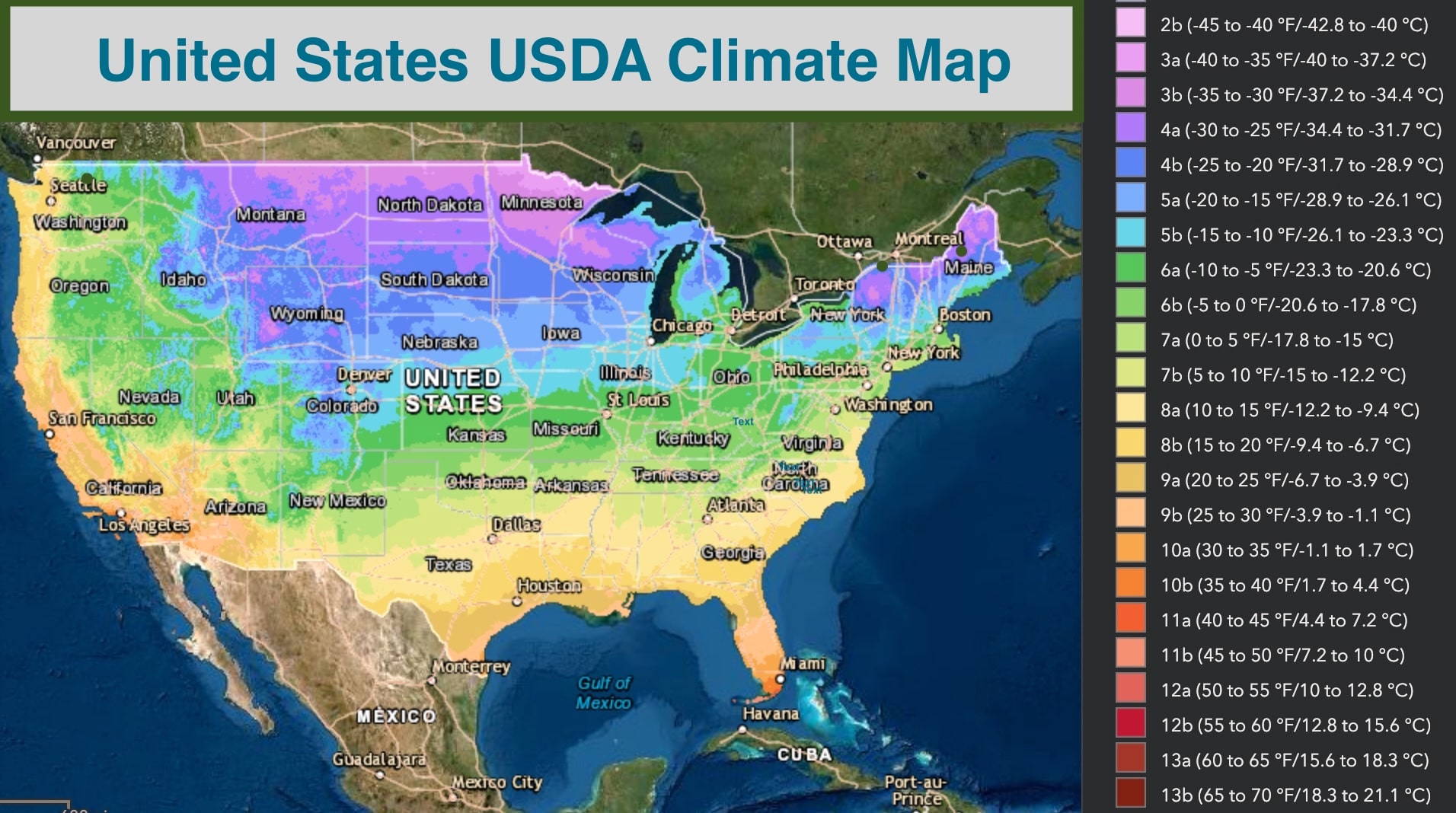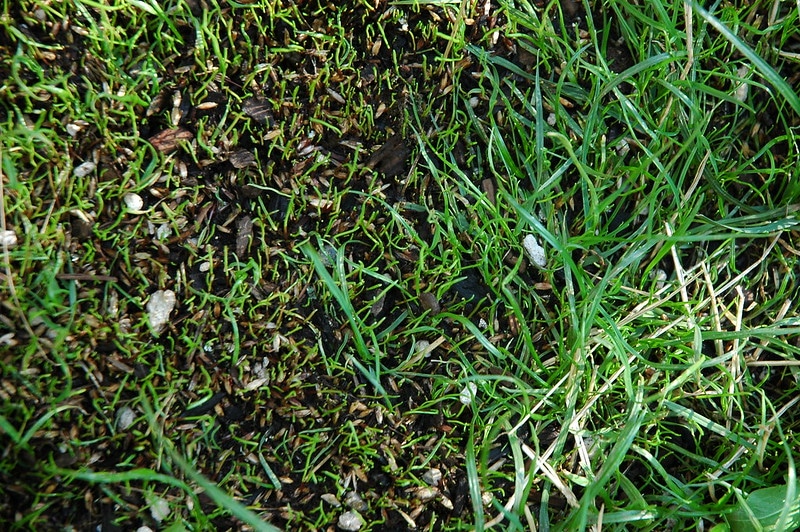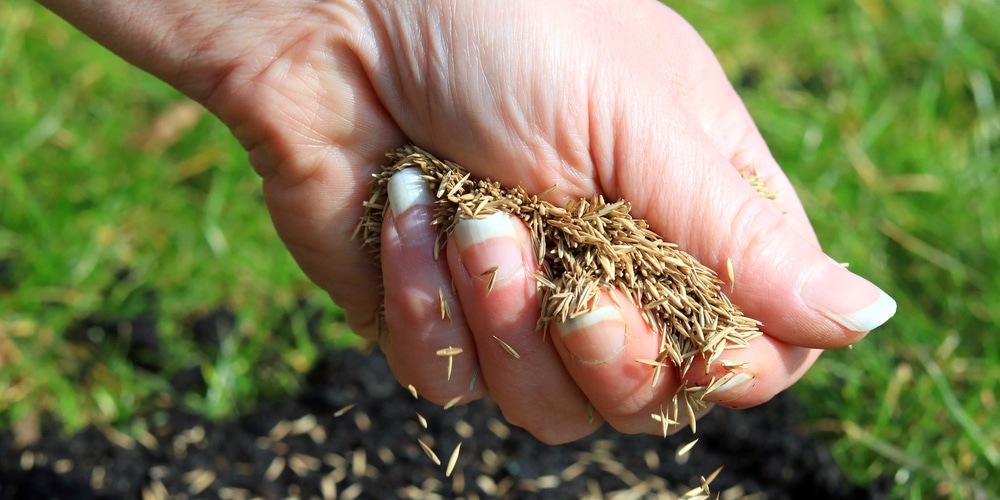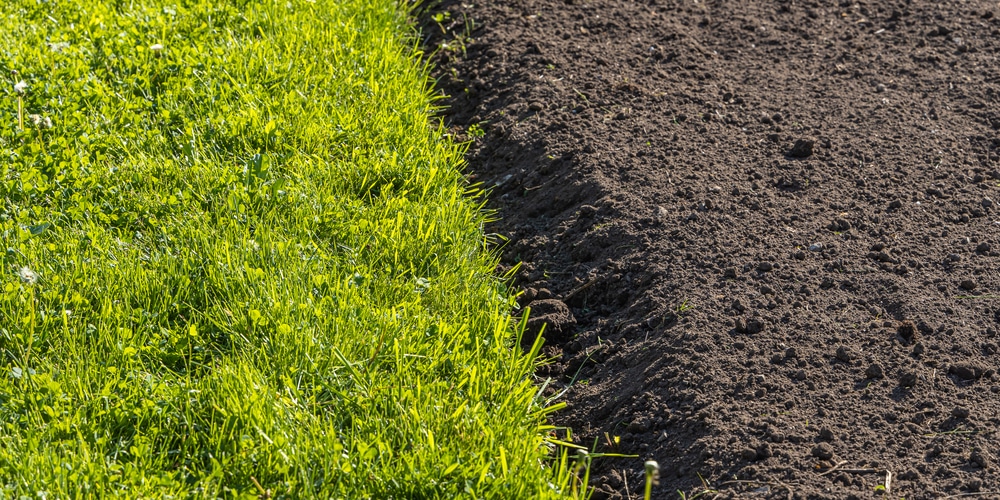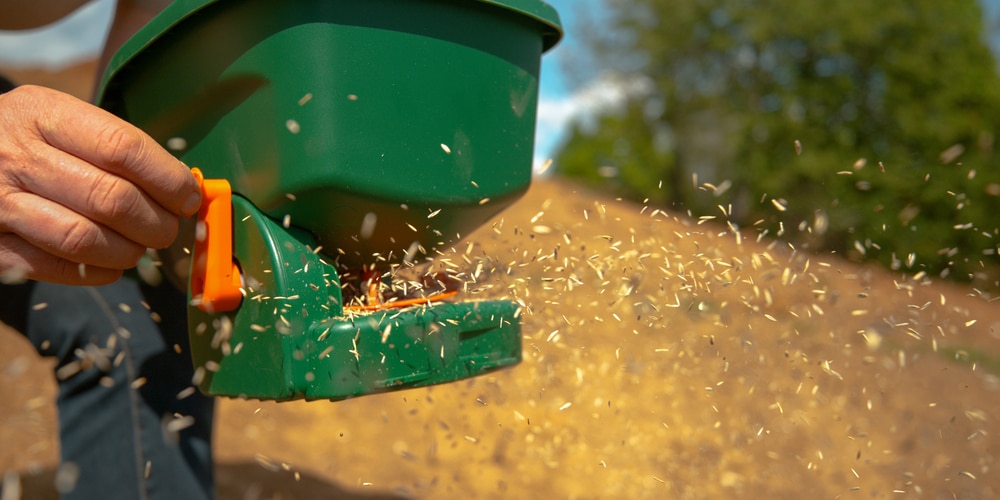| Question | When to Plant Grass Seed in Indiana? |
|---|---|
| Answer | Early fall (mid-August to late September) and spring (mid-April to early May). |
| More Info |
|
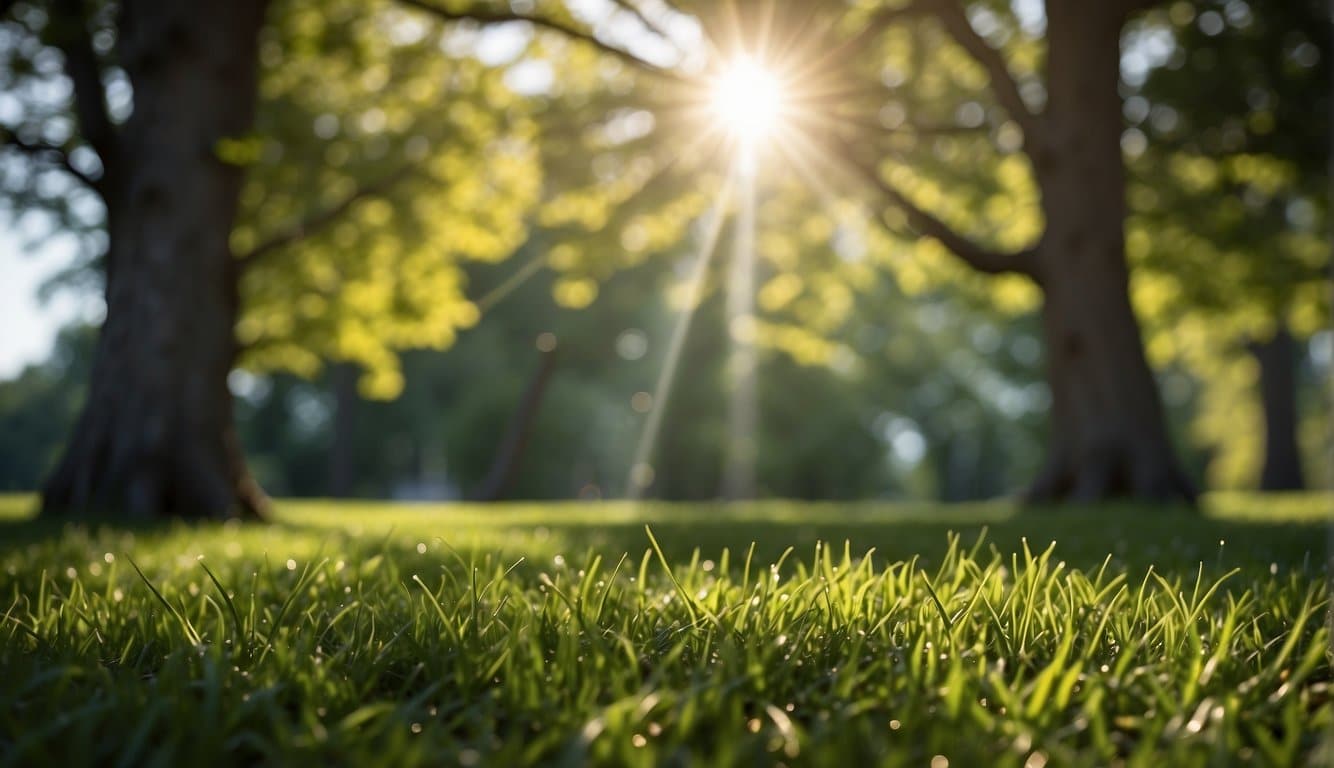
In Indiana, the best times to plant grass seed are during the early fall and spring. Fall planting, ideally from mid-August to late September, allows the grass to establish before winter.
Spring planting should occur once the risk of frost has passed and soil temperatures reach at least 50°F, typically from mid-April to early May.
Fall is generally preferred as it offers optimal growing conditions with cooler temperatures and adequate rainfall, reducing the need for irrigation and allowing strong root development before the summer heat.
Indiana’s Climate Zones
Indiana’s climate is predominantly classified as humid continental. The state experiences four distinct seasons, with variations in temperature and precipitation across different regions, making understanding the local climate zones crucial for successful grass planting.
Northern Indiana:
- Cooler temperatures
- Shorter growing season
- Grass species should be cold-tolerant
Central Indiana:
- Moderate climate
- Transition zone for cool and warm-season grasses
Southern Indiana:
- Warmer temperatures
- Longer growing season
- Suitable for warm-season grass varieties
Indiana is divided into hardiness zones ranging from 5a in the north to 6b in the south. These zones help determine the types of grasses that can thrive in each area.
- Zone 5a: A shorter growing season, with grasses needing to be cold-hardy.
- Zone 6b: A longer growing season, with the ability to support a wider variety of grasses, including some warm-season types.
Precipitation is fairly consistent throughout the state, although the timing and quantity can vary. Indiana’s climate zones must be taken into consideration when planting grass seed, as these factors influence the choice of species, planting time, and lawn maintenance practices for optimal turf health and growth.
Best Times to Plant Grass Seed in Indiana
In Indiana, successful lawn establishment through grass seed planting is highly dependent on choosing the right timing.
Generally, late summer to early fall is considered the prime window for sowing grass seed.
Ideally, gardeners should aim to plant at least 45 days before the anticipated first frost, which places the time frame from late August to early October.
During this period, soil temperatures typically range from 50 to 65 degrees Fahrenheit, which is optimal for grass seed germination.
This temperature range, combined with cooler air temperatures, helps in establishing a strong root system before winter sets in.
Spring also offers a planting opportunity, although it’s usually secondary to fall due to potential challenges such as weed competition and summer heat stress.
If planting in spring, one should aim to sow when soil temperatures consistently reach 50 degrees Fahrenheit, which often occurs between April and early May in Indiana.
Here’s a quick breakdown of the best planting times:
- Fall Planting: Late August to early October
- Spring Planting: April to early May
Optimal Soil Temperature for Germination: 50 to 65 degrees Fahrenheit
Indiana gardeners should select cool-season grass varieties like Kentucky bluegrass, tall fescue, fine fescue, and perennial ryegrass.
These species are well-adapted to the Indiana climate and can endure the cold winter temperatures, which often fall between 20 to 30 degrees Fahrenheit.
Warm-season grasses may also be suitable for southern regions of the state, but cool-season options are generally recommended for broader success.
Proper soil preparation, which includes testing, aerating, and amending the soil, is essential to further improve the chances of a lush and healthy lawn.
Choosing the Right Grass Seed
When selecting grass seed for Indiana’s climate, gardeners must consider the state’s cold winters and hot, humid summers.
Grass varieties well-suited to these conditions will ensure optimal growth and lawn health.
Cool-season grasses flourish in Indiana due to their tolerance for temperature fluctuations. The following types are recommended for Indiana lawns:
- Kentucky Bluegrass: Known for its fine texture and rich color, this grass type requires a moderate level of maintenance.
- Perennial Ryegrass: This variety is valued for its quick germination and ability to resist diseases.
- Fine Fescue: With a tolerance for shade and low water conditions, fine fescues are suitable for less sunny and drier areas.
In addition, a grass seed mix combining these varieties can create a more resilient lawn by harnessing the strengths of each species.
| Grass Type | Sunlight Preference | Maintenance Level | Water Needs |
|---|---|---|---|
| Kentucky Bluegrass | Full Sun to Partial Shade | Moderate | Moderate to High |
| Perennial Ryegrass | Full Sun to Partial Shade | Low | Moderate |
| Fine Fescue | Partial Shade to Full Shade | Low | Low to Moderate |
Gardeners should also take soil conditions into account.
Conducting a soil test will provide valuable insights into soil composition, pH, and nutrient levels, enabling the selection of a seed that matches local soil conditions.
Proper soil preparation, including aeration and amendment based on soil test results, will create an ideal seedbed for grass growth.
Preparation for Planting Grass Seed
Before a homeowner in Indiana sows a single seed, they must ensure the soil is in prime condition to foster healthy growth. Proper soil testing and preparation lay the groundwork for a lush, green lawn.
Soil Testing
The first critical step in preparing for grass seed planting is soil testing. This process helps determine the soil’s pH level and nutrient content.
Ideal pH levels for lawns typically range from 6.0 to 7.0.
If the soil test reveals pH imbalances or nutrient deficiencies, amendments like lime for acidic soil or sulfur for alkaline soil can help.
Homeowners should also look for nutrient deficits, especially for nitrogen, phosphorus, and potassium, which are key for grass growth.
Soil Preparation
Once soil testing is complete, preparation follows.
Soil preparation includes a few important steps:
- Clear debris: Remove rocks, sticks, and any other debris that could inhibit the growth of new grass.
- Cultivate the soil: Loosen the top 2 to 3 inches of soil to support root growth. This can be done with a rake for small areas or a rototiller for larger ones.
- Level the area: Smooth the soil with a rake to create a flat surface, which ensures even seed application and growth.
- Improve soil quality: If the soil lacks organic matter, amendments like compost or peat can improve soil structure and nutrient availability.
- Moisture control: Ensure the soil is moist but not waterlogged to provide a conducive environment for seed germination.
Grass Seed Planting Techniques
When planting grass seed in Indiana, gardeners should implement proven techniques to ensure the best results.
Successful germination starts with soil preparation.
One should first test the soil to determine pH and nutrient levels, then proceed with amendments like compost or lime to create an optimal growing environment.
Aeration is also critical. It involves perforating the soil with small holes to allow air, water, and nutrients to penetrate the grass roots. Aeration can be achieved using a manual or machine-powered aerator.
Seed Selection and Sowing
Choosing the right grass seed is paramount.
Gardeners should select varieties that thrive in Indiana’s climate, such as Kentucky bluegrass or tall fescue.
Once the area is ready, they can use the following sowing guidelines:
- Broadcast Method: Scatter seed evenly by hand or with a spreader over the prepared area.
- Row Planting: Plant seeds in rows, which can help reduce competition from weeds and make it easier to water and fertilize.
Watering and Maintenance
Post-seeding, consistent moisture is essential but overwatering must be avoided.
One should lightly water the seeded area at least once daily to keep the soil moist until germination occurs.
After the seeds sprout, the frequency may be reduced but the volume increased to promote deeper root development.
| Week After Planting | Watering Frequency | Notes |
|---|---|---|
| 1-2 | Daily | Keep soil consistently moist |
| 3-4 | Every other day | Transition to deeper watering |
| 5+ | Twice a week | Establish regular watering routine |
Lastly, gardeners should avoid foot traffic on the newly seeded area until the grass is well-established.
Mowing can begin when the grass reaches 3 inches in height, ensuring not to remove more than one-third of the grass blade length to maintain plant health.
Frequently Asked Questions
The success of establishing a healthy lawn in Indiana hinges on timing, soil preparation, selecting appropriate grass varieties, proper seeding techniques, and diligent post-seeding care. Here are the most common questions about planting grass seed in the Hoosier state.
What is the best time of year to plant grass seed in Indiana?
The optimal time to plant grass seed in Indiana is from mid-August to mid-September for cool-season grasses. This period aligns with favorable soil temperatures and allows the grass to establish before winter.
How should I prepare the soil for planting grass seed in Indiana?
Soil preparation should begin with testing and amending the soil based on the test results.
The soil should be loosened, cleared of debris, and levelled before seeding to provide an ideal seedbed.
Which grass varieties are best suited for the Indiana climate?
Grasses like Kentucky bluegrass, perennial ryegrass, and fescues thrive in Indiana due to their compatibility with the state’s climate and their ability to withstand cold winters.
What are the necessary steps for overseeding a lawn in Indiana?
One should mow the existing lawn short, aerate the soil to improve air and nutrient circulation, spread the seed evenly, and ensure good seed-to-soil contact for successful overseeding.
How does one care for newly seeded grass to ensure proper growth?
Newly seeded grass requires consistent watering, keeping the soil slightly moist but not waterlogged.
Young grass should also be protected from foot traffic until it is well-established.
What considerations should be made when planting grass seed in shaded areas in Indiana?
For shaded areas, one should select shade-tolerant grass species and ensure the area receives adequate moisture.
Thinner seeding and adjusting mowing height can also promote better growth in shaded conditions.
Last update on 2025-04-18 / Affiliate links / Images from Amazon Product Advertising API



